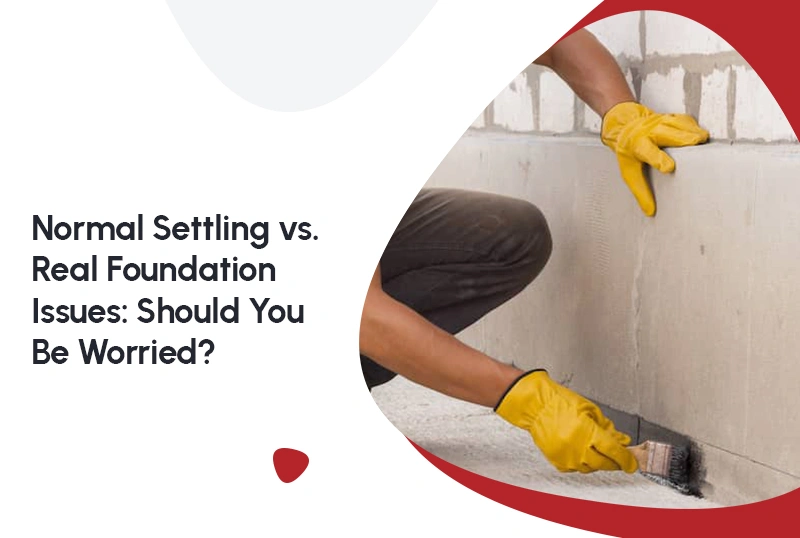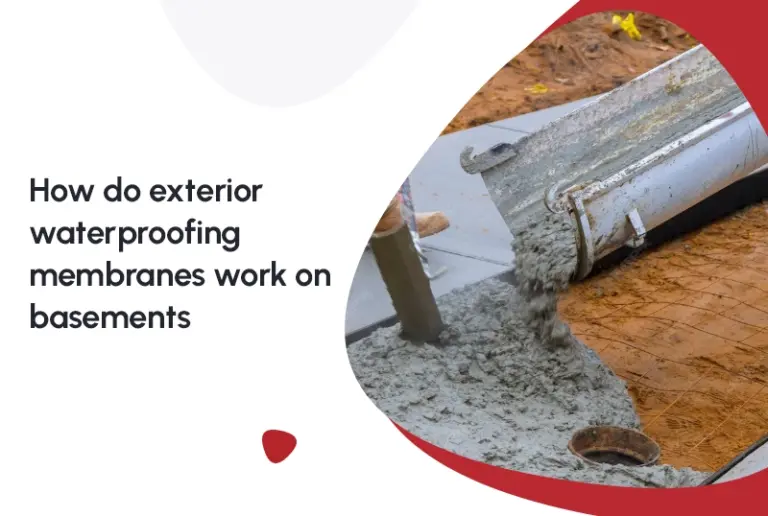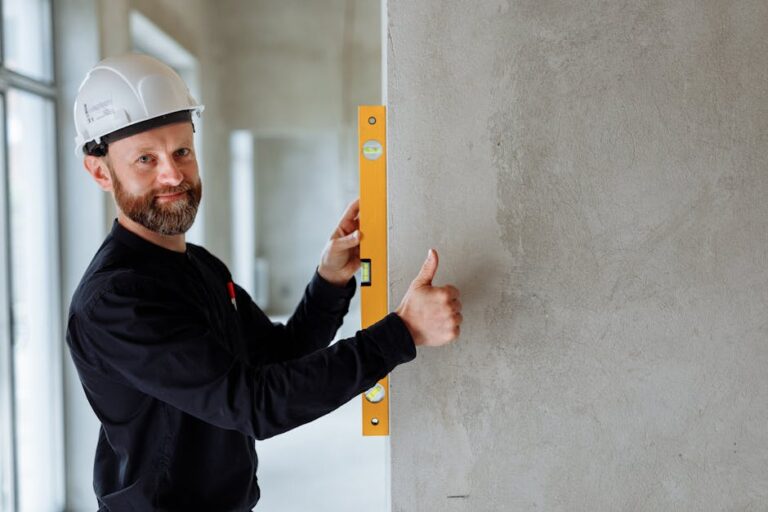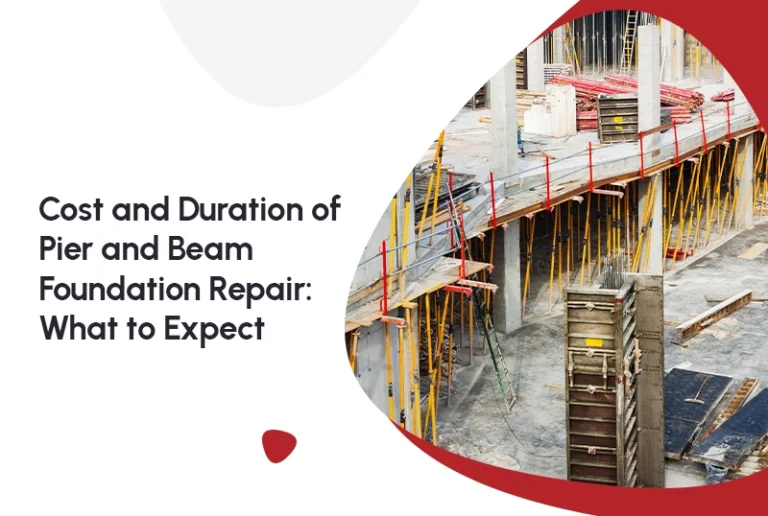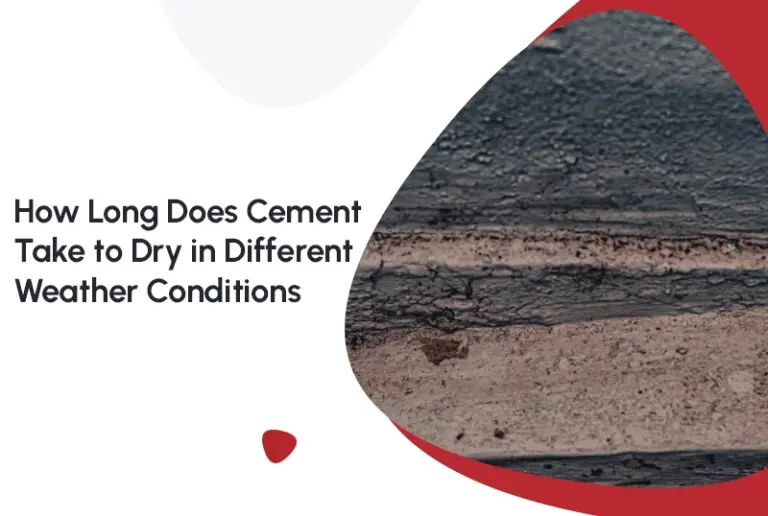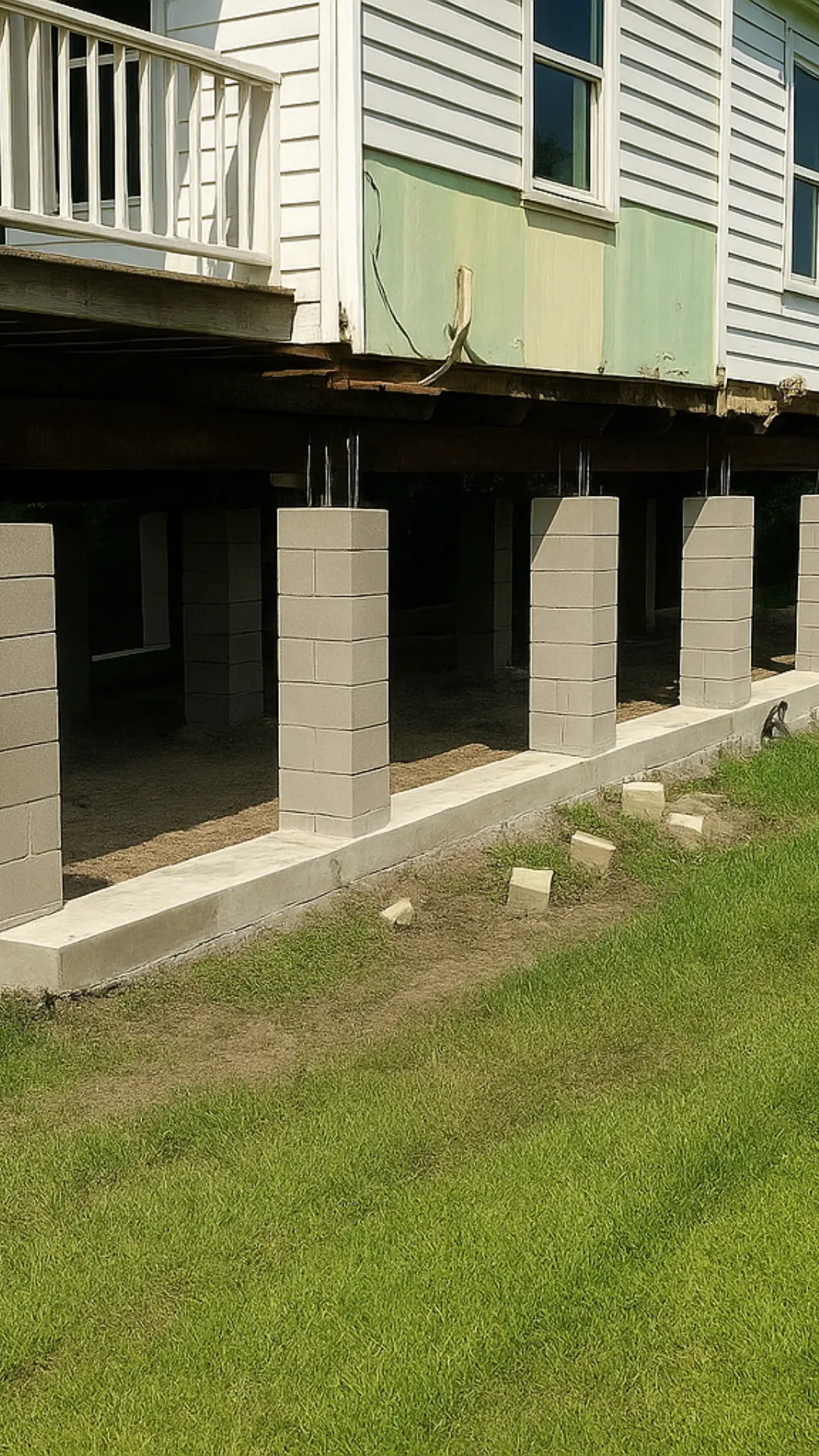When it comes to your home’s structure, it’s natural to notice a few cracks or shifts over time. But how do you know if these are signs of foundation issues or just normal settling? Homeowners often overlook the early symptoms until a minor concern turns into a major—and costly—problem. Understanding the difference is key to protecting your investment and maintaining your home’s safety and value.
What Is Normal Settling?
Normal settling happens when a new home gradually adjusts to its environment. This is especially common during the first few years after construction. As the soil beneath the foundation compresses and moisture levels fluctuate, your house may shift slightly. You might notice tiny hairline cracks in the drywall or above windows and doors. These are usually not a cause for concern.
However, if those cracks widen, become diagonal, or appear alongside sticking doors and windows, it may be more than settling. That’s when it’s crucial to look closer at the signs of foundation issues.
Early Warning Signs of Foundation Problems
One of the most common indicators of foundation trouble is uneven floors. If you place a marble or ball on your floor and it rolls in one direction, that’s a red flag. Another sign includes visible gaps between walls and the ceiling or floor, which suggest structural movement. Bulging or bowing walls, especially in basements, also hint at shifting foundation walls under pressure.
Foundation Repair specialists recommend inspecting your home’s exterior as well. Large cracks in the brickwork, crumbling mortar, or separation around doors and windows may point to more serious concerns beneath the surface. These signs should not be dismissed as cosmetic flaws—they often signal underlying issues that require professional evaluation.
Common Causes of Foundation Damage
Foundation damage often starts with soil conditions. Expansive clay soils, common in many areas, swell with moisture and shrink during dry periods. This cycle of movement puts repeated pressure on your foundation. Poor drainage around the home can exacerbate the problem, causing soil erosion or water accumulation that undermines the foundation’s stability.

Tree roots are another culprit. Large trees planted too close to the home may draw moisture from the soil, creating voids that lead to settling or sinking. In some cases, improper construction techniques, such as inadequate compaction of the soil before pouring the foundation, lead to premature structural issues.
Understanding these causes helps you stay vigilant in identifying potential signs of foundation issues before they escalate.
See more details? Cost to Fix a Foundation in 2025: What Homeowners Need to Know
Warning Signs Inside the Home
While visible cracks are easy to spot, many signs of foundation issues hide in plain sight. Do your doors suddenly stick or refuse to latch properly? Are your windows hard to open or close? These inconveniences may seem unrelated to the foundation, but they often result from shifts in the home’s frame.

Look for floors that feel bouncy or slope noticeably. Gaps in your baseboards or crown molding could also point to movement in the structure. Homes with a Concrete Slab Foundation Repair history might show patches or uneven surfaces where earlier repairs were made—these areas need regular monitoring to ensure the problem doesn’t recur.
If you notice multiple symptoms occurring together, it’s likely time to consult with a professional.
The Role of Moisture and Drainage
Water is the most significant factor influencing your foundation’s health. Poor drainage, leaking plumbing, or heavy rainfall can create pressure around your home’s base. When moisture accumulates, it softens the soil, reducing its ability to support the structure. Over time, this leads to settling and movement.
Installing proper gutters and downspouts, grading your yard to slope away from the home, and fixing leaks promptly are all preventative steps homeowners should take. Keeping an eye on seasonal changes in the soil and moisture levels can also help reduce the risk of foundation failure.
Excessive moisture around the slab can necessitate Tunneling under the home to address plumbing issues or reinforce footings—an expensive but sometimes necessary intervention when foundational stability is compromised.
When to Take Action
Not all foundation issues require immediate repairs, but delaying can lead to extensive damage and higher costs. Once you identify multiple warning signs—especially large cracks, separation between building components, or uneven floors—it’s wise to schedule an inspection. Many reputable contractors offer free evaluations that can determine whether your home needs structural repairs or just cosmetic fixes.
Make sure to choose experienced professionals with knowledge in your specific foundation type, whether pier and beam or concrete slab. Addressing signs of foundation issues early can save thousands of dollars in the long run.
Final Thoughts
Normal settling is part of every home’s life, but knowing when it’s something more serious is essential. Keep an eye on small but suspicious changes in your walls, floors, and exterior. Act quickly when the symptoms start to multiply—your home’s safety and value depend on it.
Whether it’s a minor adjustment or a larger structural concern, being proactive is the best protection. Homes with slab structures may need specialized solutions, while moisture-related problems might require underground access to address hidden issues beneath the surface.
Pay attention to the subtle clues, and you’ll stay ahead of any potential foundation failure. After all, a strong foundation is the base of a secure and lasting home.
FAQS (Frequently Asked Questions)
1. What are the most common signs of foundation issues in a home?
Cracks in walls, sloping floors, and sticking doors are typical signs of foundation issues. These may indicate your home’s structure is shifting or settling unevenly.
2. How can I tell the difference between normal settling and a foundation problem?
Normal settling causes small, harmless cracks, while major signs of foundation issues include widening gaps, uneven floors, and visible wall separation.
3. Is it dangerous to ignore signs of foundation issues?
Yes, ignoring signs of foundation issues can lead to costly damage and even structural failure if not addressed early.
4. Can water around my home cause foundation problems?
Excess moisture is a major cause of signs of foundation issues, weakening the soil and causing the foundation to shift or sink.
5. When should I contact a professional for a foundation inspection?
If you notice multiple signs of foundation issues like large cracks or sloping floors, call a professional immediately for an inspection.
